Peter Dornauf – 29 May, 2012
The solo show is accompanied by a twenty four page publication with an essay by Megan Tamati-Quennell, Curator Contemporary Maori and Indigenous Art, Te Papa Tongarewa. It provides a valuable insight into the detailed hermeneutic of the works and notes that the early paintings are self-referential where inside knowledge is paramount to obtain a comprehensive reading.
Hamilton
Hemi Macgregor
Remix
Curated by Karl Chitham
14 May - 22 June 2012
Remix is a mini retrospective of artist Hemi Macgregor’s creative practice spanning over a decade’s worth of work from 1998 to 2010. The exhibition, at the Calder and Lawson Gallery, Waikato University, curated by Karl Chitham, was set up to coincide with the University’s Day of Celebration in connection with the Kingitanga Movement.
Although none of the paintings in the show directly allude to that specific social and political phenomena of the 1860’s, they are, both in their look and subject matter, generically Maori. The closest one gets to political history are in the early pieces from the late nineties where direct reference is made to the early twentieth century Maori prophet, Rua Kenana and the obvious political and cultural ramifications played out in those tragic events of 1905-16.
Macgregor is himself of Tuhoe descent so it’s no surprise he should address this topic. Apart from the Land Wars which inspired the origins of the King Movement, the Maungapohatu incident has become one of those substantive and symbolic markers of culture conflict that bedevil this country.
The work in question, Rua, 1998, is small in size, on board, and evidences influences from McCahon to Cotton. Text predominates and even an I AM is thrown in for good measure. Although early and derivative, this piece from a developing talent, shows verve and energy which the subsequent works, though stylistically advanced, seem to lack.
Early 2000’s he is still trying to find his own voice, trying out other modes of approach. After All I’ve Said And Done, 2001, has the crude configurations of a Tony de Lautour while just a year earlier, Free Ride, recalls elements of a funky Bill Hammond.
It’s not until we get to the paintings of 2007 and on that Macgregor attempts to strike out on his own, leaving the figurative behind and using Maori motifs in abstracted forms to convey his preoccupations with matters indigenous.
Tuia I Runga, 2007, takes the tiki form as his starting point, but although inventive in its stylization, the overall effect is something that starts to look like wallpaper.
Te Aka, 2010, is another advance but though visually strong, there’s a good deal of Shane Cotton still left inside it.
Macgregor has an obvious facility with paint but has yet to fully develop his own unique signature style.
Who Dares Winz, 2000, could ironically be a pointer, given that the piece encapsulates both the fervour and vitality of the early works while having something of the move to abstraction.
The solo show is accompanied by a twenty four page publication with an essay by Megan Tamati-Quennell, Curator Contemporary Maori and Indigenous Art, Te Papa Tongarewa. It provides a valuable insight into the detailed hermeneutic of the works and notes that the early paintings are self-referential where inside knowledge is paramount to obtain a comprehensive reading; coded reference to a Pakeha Grandmother, for example and the significance of the Chrysler car- an engine called “Hemi” which is used as a symbol denoting his dual identity. The essay also unpacks one of the dominant motifs that run through Macgregor’s oeuvre - the mouth with extended tongue, an allusion to Maori oral culture; his mother was a Te Ataarangi tutor, an immersion programme of learning developed in the late 1970’s.
Mention is also made of his use of ready-mades - caps and hooded sweatshirts (the latter not included in this show) where urban culture speaks of race and identity, feeding off African American hip hop fashion, providing here a platform for comment on cultural dislocation. Tamati-Quennell points out the visual sophistication of the later abstracted works without making any observation with regard to their derivative nature other than to state the links with kowhaiwhai pattern and connection to Maori knowledge systems.
This essay is informative and useful at an interpretative level, exploring Macgregor’s evolution and ideological focus as a contemporary Maori artist who engages with modern dilemmas associated with multicultural life in these Islands.
Peter Dornauf
Recent Comments
Megan Dunn
Jenny Doležel - now there's a name I have not heard in a long time...When I started art school I ...
Andrew Paul Wood
Good point Owen, though I think the market is a strong factor. Look at Kelcy Taratoa for example or Jenny ...
Owen Pratt
I get a sense of that other big ticket painter Hammond here too, but haven't all good NZ artists taken ...
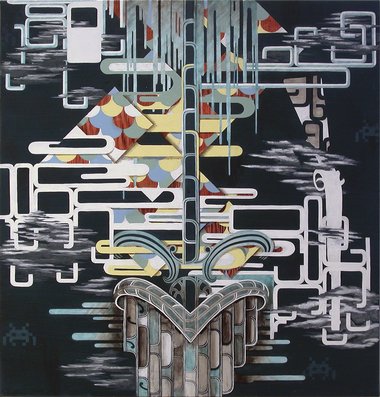

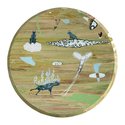
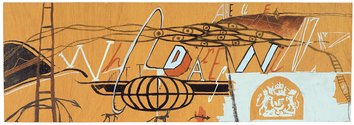
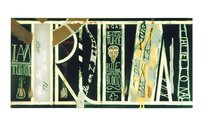
 Advertising in this column
Advertising in this column Two Rooms presents a program of residencies and projects
Two Rooms presents a program of residencies and projects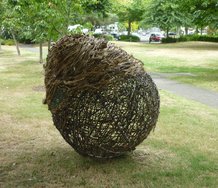
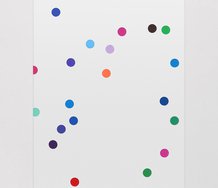
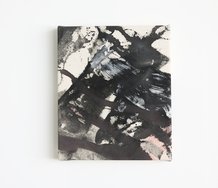
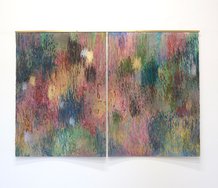
This Discussion has 8 comments.
Comment
Andrew Paul Wood, 4:49 p.m. 29 May, 2012 #
Partially digested late 1990s Shane Cotton as visual dog whistle for "contemporary Maori painting" with some Tony de Lautour clouds and more reliant on heavy-handed PoMo Istoria than any real visual synthesis. Patchy pastiches of Ruben Patterson's glittery camp 70s wallpaper deconstructions of Gordon Walters. Early Seraphine Pick here, early Saskia Leek there. I'm sure it's very marketable, but I have very little sense of the artist, just an overwhelming aftertaste of a good graphic designer given some sources to mix together. Meh.
John Hurrell, 6:02 p.m. 29 May, 2012 #
Macgregor is highly regarded for his 'assisted readymades' that reference hiphop culture. I'd be reluctant to under-estimate him.
Andrew Paul Wood, 8:12 p.m. 29 May, 2012 #
What is an "assisted readymade" when it's at home? Do you deny that the imagery is highly derivative of Shane Cotton's work of the late 1990s in its quite specific deployments of text, support structures, wood grain, and colour scheme?
John Hurrell, 8:31 p.m. 29 May, 2012 #
It's Duchamp's term for a tweaked, store-bought object. In Macgregor's case clothing like hoodies or caps. He's an exceptionally versatile artist.
Andrew Paul Wood, 11:37 p.m. 29 May, 2012 #
Again I contend the imagery is highly derivative of Shane Cotton's work of the late 1990s in its quite specific deployments of text, support structures, wood grain, and colour scheme.
There is, I believe, an occasional tendency to over-freight some artist's oeuvres with significance based on work as cultural artifact rather than aesthetic construct. I'm not saying that it's an invalid approach, but I think it should be made clear when one is doing so.
Owen Pratt, 8:54 a.m. 30 May, 2012 #
I get a sense of that other big ticket painter Hammond here too, but haven't all good NZ artists taken a bath in art history. The works do look like reproductions but then so do Shane's.
Is it fair to then default to a market setting though? I know a few painters who are in the thrall of Shane Cotton and it has little to do with the money, after all they are not brand Cotton. It does raise issues of authenticity, autonomy and influence, with alternative strategies for the production of artworks; and this may be a way to go past the market triumphalism that has put vaseline on our cultural spectacles.
Andrew Paul Wood, 6:37 p.m. 30 May, 2012 #
Good point Owen, though I think the market is a strong factor. Look at Kelcy Taratoa for example or Jenny Doležel who became formulaic almost as soon as they became heavily promoted.
Again, I'm not saying Macgregor lacks talent, just that it goes way past homage in "acknowledging" his sources. This is a good opportunity to discuss the roles of authenticity, autonomy and influence in postmodern NZ art - big parts of my PhD thesis.
Megan Dunn, 12:20 p.m. 31 May, 2012 #
Jenny Doležel - now there's a name I have not heard in a long time...When I started art school I liked her work. It was kinda like what Robert Smith might have made if he was a painter...
Participate
Register to Participate.
Sign in
Sign in to an existing account.